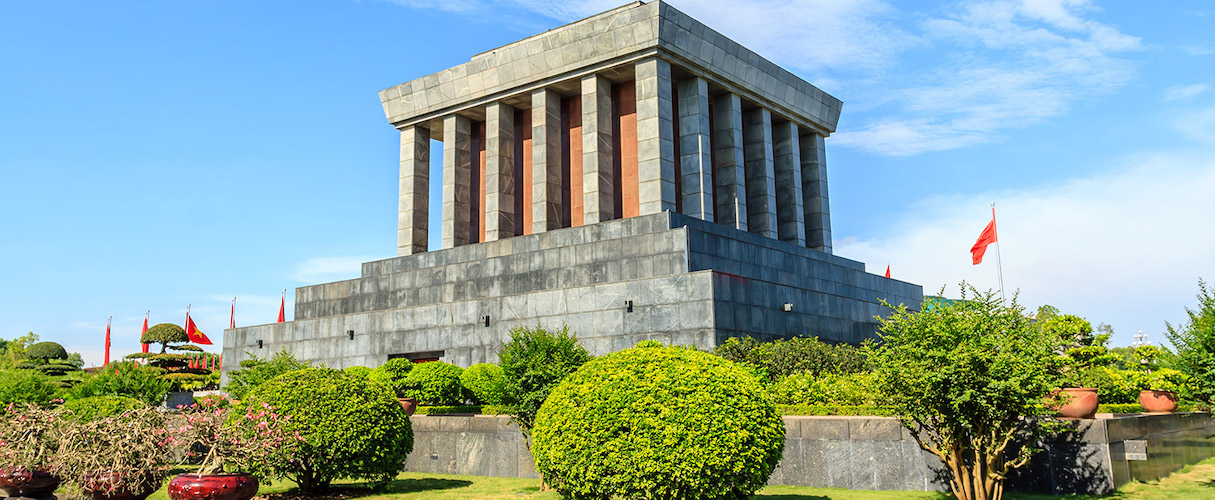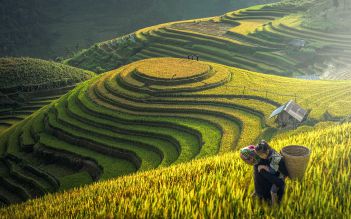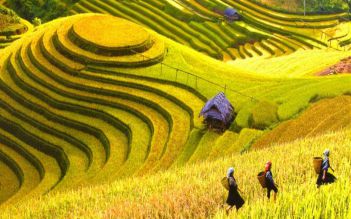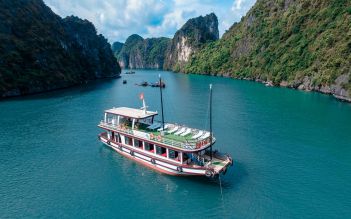Overview
Ho Chi Minh Mausoleum is an important structure in Hanoi where Great Leader Ho Chi Minh’s corpse is located.
About Ho Chi Minh Mausoleum
Ho Chi Minh Mausoleum is the place where President Ho Chi Minh's corpse is located. Ho Chi Minh Mausoleum was officially started on September 2, 1973, at the location of the old ritual between Ba Dinh Square, where he once hosted major meetings.
The mausoleum was inaugurated on August 29, 1975. The construct consists of three layers with a height of 21.6 meters and a width of 41.2 meters. The shape of a three-level staircase, the middle layer is the central structure of the tomb including the room corpses and corridors, stairs. The outside of the tomb is covered with gray granite, inside is made of polished gray and red stone. Around the four sides are rows of square columns of marble, the top layer is a three-level trapezoidal roof. On the main side are the words: "HO CHI MINH PRESIDENT" with ripe pink plum stone. Around the mausoleum are gardens where more than 250 plant species are grown from all parts of Vietnam.

Ho Chi Minh Mausoleum
The architecture of Ho Chi Minh Mausoleum
After the funeral of President Ho Chi Minh, "Planning Department A" including Mr. Nguyen Luong Bang, Tran Quoc Hoan and Phung The Tai began to study the planning of construction of Ho Chi Minh Mausoleum. In January 1970, the Soviet Government sent a delegation of officials to Vietnam to discuss design and announcements that would provide technical assistance in the design, construction and equipping of Mausoleum.
Construction materials are brought from many regions across the country. Sand collected from streams in Kim Tien Commune, Kim Boi District, Hoa Binh Province is brought back by Muong ethnic people; pebbles were transferred from streams in Son Duong, Chiem Hoa, Ngoi Sat, Tuyen Quang; stone selected to build tomb from all over the places such as stuffed stone in Thanh Hoa, Hoa stone in Thay pagoda, Red stone in Non Nuoc mountain, etc; crushed stone is taken from Hoang Thi quarry (Thac Ba, Yen Bai). People along the Truong Son mountain range also sent out 16 types of precious wood. Tree species from all regions were brought here such as cho nau tree in Hung Temple, ban tree in Dien Bien-Lai Chau, bamboo in Cao Bang.
On the top of the mausoleum is the word "President Ho Chi Minh" grafted with crimson jade stone of Cao Bang. The gate of the mausoleum is made from precious timber trees from the Central Highlands. The lobby was made from the marble tiles as the background for the words "There is nothing more precious than Liberal - Independence" and Ho Chi Minh's signature was inlaid with gold. 200 sets of gates of the mausoleums are made from precious woods sent by the people of the South, Central Highlands, Quang Nam - Da Nang and Truong Son soldiers, and by the carpentry artists of Nam Ha, Ha Bac, and Nghe An carved. On both sides of the main door are two Champa flower trees. In front of and behind the mausoleum planted 79 "thousand years" trees represent the age of 79 of President Ho Chi Minh. The south and north sides of the mausoleum are two bamboo ranges, the symbolic tree species for Vietnam. In front of the gate, there are always two soldiers standing guard.

Ho Chi Minh Mausoleum
Tourist activities
Each week there are more than 15,000 people visiting Ho Chi Minh Mausoleum. Many individuals and organizations visit the mausoleum on holidays, and important anniversaries of Vietnam.
Mausoleum does not charge admission fees but visitors are required to follow requirements such as dressing properly, not taking cameras, mobile phones with the function of shooting, turning off the phone, not carrying food and drink and keep silence in the mausoleum.
Ho Chi Minh Mausoleum is the most important structure in Hanoi. As of 2012, there were nearly 50 million people visiting President Ho Chi Minh Mausoleum, of which more than 8 million international visitors.




